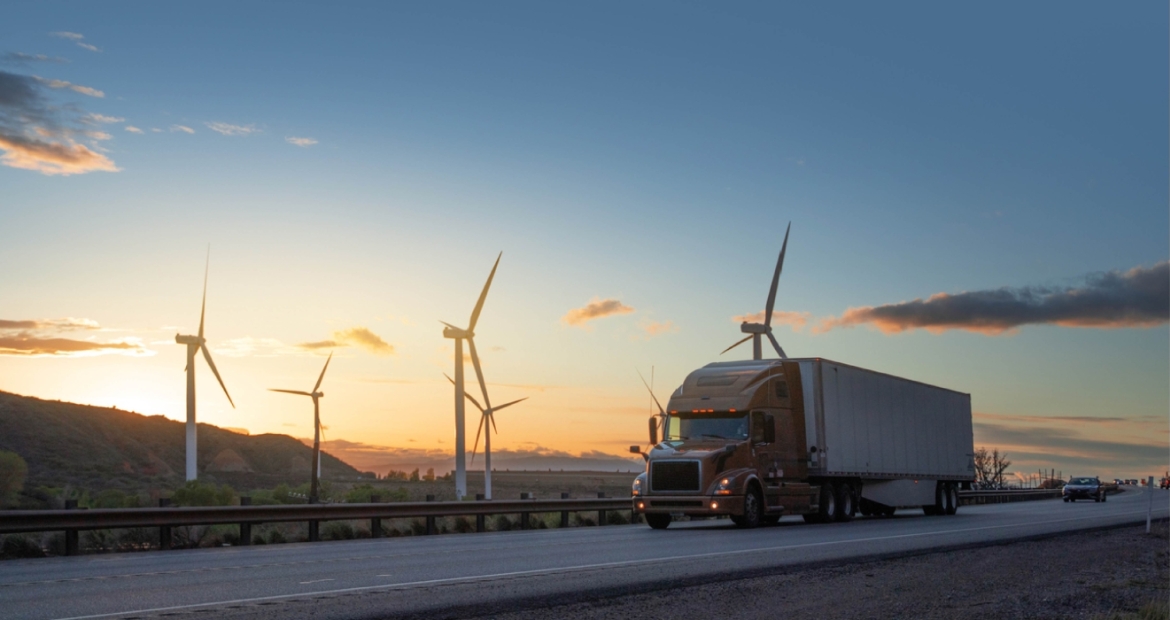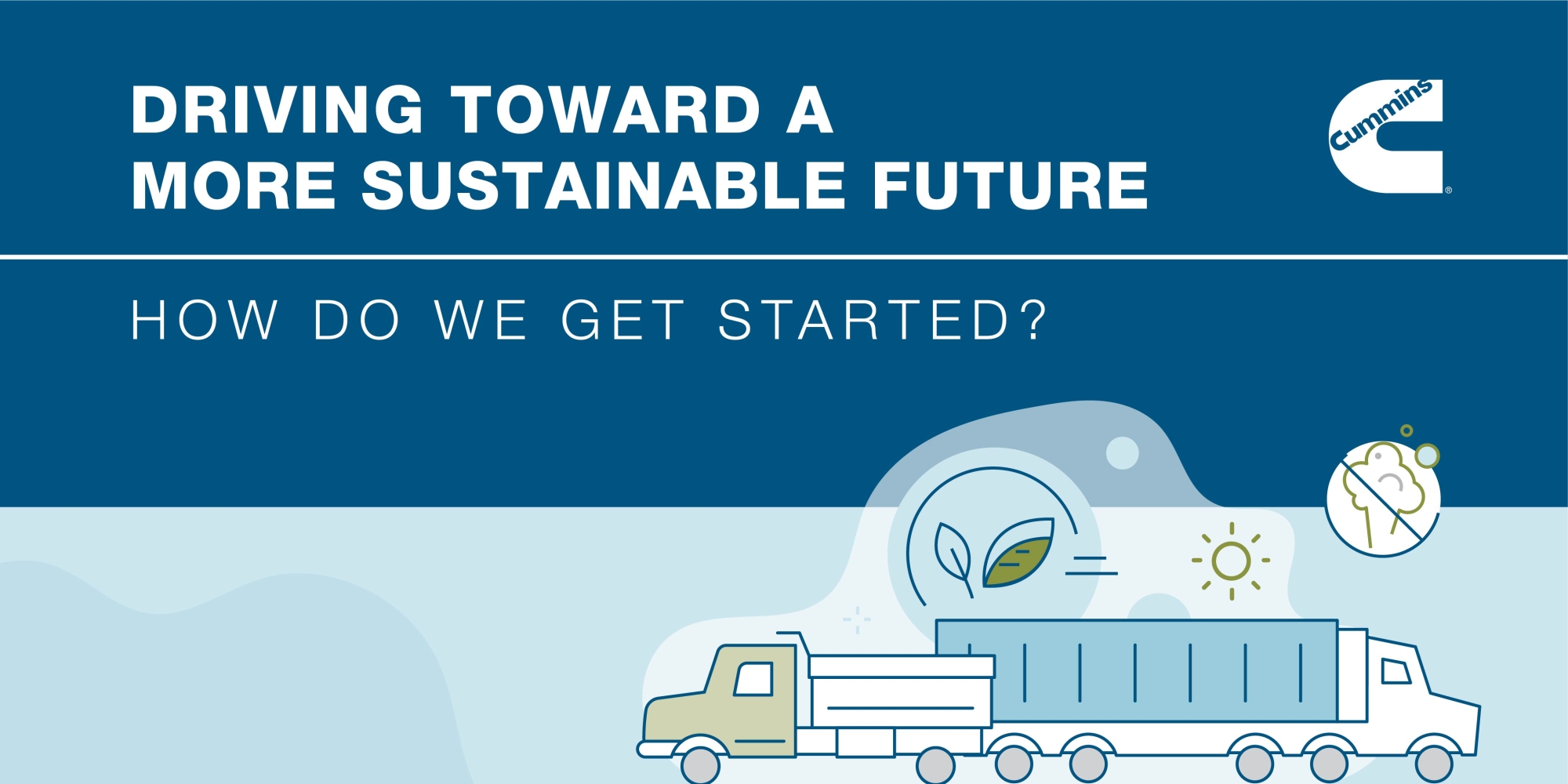Driving toward a more sustainable future in the United States
By Traci Kraus, Director, Government Relations

The future of our planet depends on a decarbonized economy. At Cummins Inc., we believe the path to zero emissions involves both developing advanced internal combustion engines which can be deployed today, and innovating zero-emission solutions in markets where the infrastructure is ready. Cummins estimates that advancing both ways will contribute to 1.4 gigatons of cumulative carbon reduction. That’s the equivalent of removing all trucks from the road for three years.
So, what will the decarbonization journey look like for the transportation industry in the United States?
Diesel engines are becoming cleaner to meet emissions regulations
The transportation sector is responsible for roughly 27% of United States greenhouse gas (GHG) emissions. As one of the largest contributors causing climate change, transportation is in critical need of clean energy sources. Not all applications are ready for advanced technologies and will continue to rely on traditional energy sources for more years. Barriers to switching technologies include cost, infrastructure availability, reliability and technology readiness.
The good news is that diesel engines are becoming increasingly cleaner. Cummins is leading the way by investing more in diesel engine research and development than at any other point in its 100-plus-year history. Although improving fuel economy might not grab the headlines, it adds up to real results.
The trucking industry is also working to make sure engines can run on cleaner fuels, like biodiesel. Biodiesel B20 is a blend of 20% biodiesel and 80% petroleum diesel. B20 is a popular choice due to its numerous benefits, including lower emissions, cost savings from the Energy Policy Act fuel credits and good performance in cold weather. B20 also has the added benefits of material compatibility, and the ability to act as a solvent. There are already established quality standards and it can be used in current engines without modifications. It offers similar fuel consumption, horsepower and torque as petroleum diesel.
Natural gas engines are an alternative technology available now
In the on-highway market, light, medium and heavy-duty trucks need advanced technologies that are fuel efficient and get the job done. So, besides diesel, what are the other technologies available now for customers?
Natural gas engines are the mature, proven and least disruptive alternative power technology available today. These engines can use compressed natural gas (CNG), reducing GHG emissions by 13% - 18%. They can also run on renewable natural gas (RNG), a carbon-neutral fuel in most cases and carbon-negative in others, or a blend of the two. Natural gas engines are a good fit for vocational trucks, transit and school buses, medium-duty and regional-haul trucks that have access to refueling infrastructure.
The joint venture between Rush Enterprises and Cummins seeks to enhance the production of near-zero emissions natural gas powertrains. This joint venture combines the strengths of Momentum Fuel Technologies’ compressed natural gas (CNG) fuel delivery systems and Cummins’ powertrain expertise. Fleets will be able to access both support networks, which represent over 250 locations in the U.S. and Canada. These locations are well-equipped with certified technicians and access to a natural gas vehicle parts inventory.
Powering tomorrow’s applications with batteries and hydrogen to reach net-zero emissions
Currently, battery-powered vehicles are limited by their range and payload capacity. That’s why they are less suitable for long-distance and heavy hauling applications. This is mainly due to the high cost and weight that large batteries require. The 2022 State of Sustainable Fleets report suggests that fleets with daily return-to-base routes under 200 miles and predictable access to charging stations will find it easier to adopt battery electric vehicles. Such applications are typically found in school and transit buses, and delivery and light-duty trucks, as well as regional goods trucks.
One way of solving the weight and cost issues mentioned above is by using hybrid systems. Hybrid systems incorporate both a combustion engine and a battery electric system. This can lead to increased fuel efficiency and reduced battery and engine size. It also eliminates the need for a large, costly battery. Creating demand for batteries in the commercial vehicle market will help manufacturing costs come down by creating greater economies of scale.
Beyond batteries, one of the most promising power technologies is hydrogen. As regulations limit greenhouse gas emissions from motor vehicles, both hydrogen internal combustion engines (ICE) and fuel cells are gaining interest. Hydrogen internal combustion engines are especially efficient for heavy trucks that operate under high loads. This technology can help fleets adapt to a new fueling infrastructure before fuel cells become more widely available, as they are still an emerging technology. Switching to hydrogen engines involves a familiar technology and engine architecture, while still advancing the hydrogen infrastructure. Both hydrogen ICE and fuel cells offer complementary use cases and have similar emissions profiles. They are two key components in reducing vehicle and transportation emissions and reaching net-zero missions.
Clean energy investments, such as the 2022 Inflation Reduction Act, are essential for driving the advancement of sustainable technologies and the necessary infrastructure. By investing in cleaner technologies, such as battery-electric or hydrogen, the United States can make significant progress toward combatting climate change.
Author Profiles

Traci Kraus, Director, Government Relations
Traci Kraus is a Director of Government Relations where she leads US federal advocacy for Cummins. She focuses on energy, climate, hydrogen, transportation and budget legislative and regulatory issues. Prior to joining Cummins, Traci worked for former U.S. Senator Russ Feingold. She has a Master’s in Public Administration from the George Washington University and B.A.s in Government and Politics and Communication from the University of Maryland in College Park. She is originally from Chicago, and now lives outside of Washington, D.C. with her husband, Aaron and two children Liam (8) and Sloane (5).
